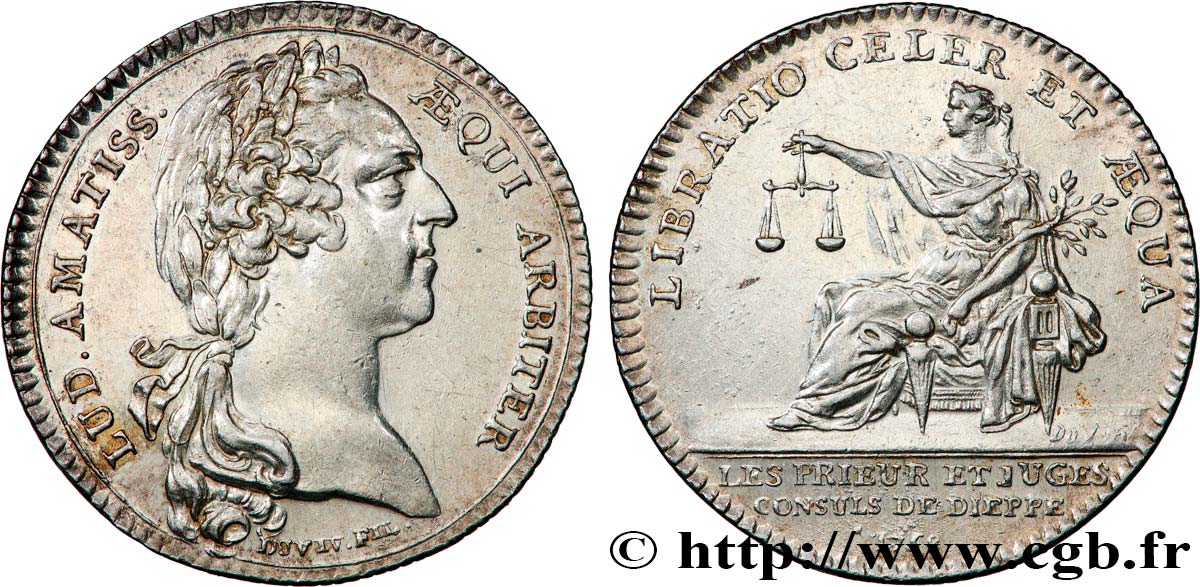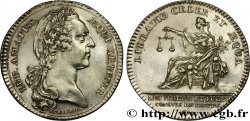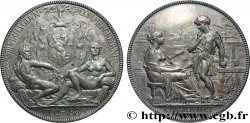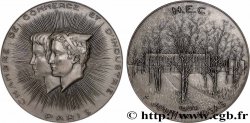fjt_906716 - CHAMBERS OF COMMERCE / CHAMBRES DE COMMERCE Chambre de commerce de Dieppe (Louis XV) 1758
Quantity
Add to your cart

Type : Chambre de commerce de Dieppe (Louis XV)
Date: 1758
Metal : silver
Diameter : 28,15 mm
Orientation dies : 6 h.
Weight : 8,68 g.
Edge : cannelée
Rarity : R1
Coments on the condition:
nettoyé
Catalogue references :
Obverse
Obverse legend : LUD. AMATISS. ÆQUI ARBITER.
Obverse description : Buste de Louis XV à droite avec une légende très particulière.
Obverse translation : Louis le Bien-Aimé arbitre de la Justice.
Reverse
Reverse legend : LIBRATIO CELER ET AEQUA À L'EXERGUE : LES PRIEUR ET JUGES CONSULS DE DIEPPE 1758.
Reverse description : Allégorie de la Justice tenant un rameau et une balance, assise à gauche.
Reverse translation : Sa pesée est rapide et égale.
Commentary
Buste exceptionnel à la légende très particulière qui a certainement été gravé spécialement pour cette Chambre de commerce. Feuardent ne cite pas ce buste dans ses planches mais le cite dans le texte comme étant un buste varié
Les juridictions consulaires remontent à Henri II. Dans ces lieux de réunions, les marchands élisent entre eux un prieur et deux juges-consuls qui règlent en première instance les problèmes entre négociants. Les juges-consuls ou juges des tribunaux de commerce sont établis par un édit de 1563. Ils étaient souvent d’anciens consuls (officiers municipaux) d’où leur nom. Au XVIIIe siècle, les juges-consuls jugeaient souverainement jusqu’à 500 livres (au-delà, l’affaire relevait des Parlements) Les commissaires étaient hiérarchisés en Prieur, Président, Juges Consuls, assistants, et éventuellement un Procureur Syndic avec des négociants représentants chaque corps de métier.
Les juridictions consulaires remontent à Henri II. Dans ces lieux de réunions, les marchands élisent entre eux un prieur et deux juges-consuls qui règlent en première instance les problèmes entre négociants. Les juges-consuls ou juges des tribunaux de commerce sont établis par un édit de 1563. Ils étaient souvent d’anciens consuls (officiers municipaux) d’où leur nom. Au XVIIIe siècle, les juges-consuls jugeaient souverainement jusqu’à 500 livres (au-delà, l’affaire relevait des Parlements) Les commissaires étaient hiérarchisés en Prieur, Président, Juges Consuls, assistants, et éventuellement un Procureur Syndic avec des négociants représentants chaque corps de métier.








 Report a mistake
Report a mistake Print the page
Print the page Share my selection
Share my selection Ask a question
Ask a question Consign / sell
Consign / sell
 Full data
Full data



